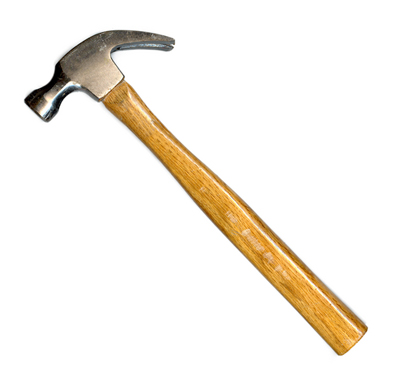Fast and Easy Science Fair Projects: Blown Away









This is my 23rd hub on Fast and Fair Science Fair Projects. I'm sure you'll enjoy reading and trying out this one too! Good luck!
Fluidics: air flow around shapes
Purpose: Determining how air flows around objects could sometimes be very helpful to know.
Overview: It is important to understand how moving air behaves. Airplanes lift off the ground because of the way air travels past the wings, which have a special shape. When two tall buildings are close together, wind can speed up as it travels between them, causing a windy condition that maybe undesirable.
Hypothesis: The shape of an object affects how moving air flows around it.
You need:
- Hand-held hair dryer
- Coffee Mug
- Nail, about 2 inches (5 cm)
- Hammer
- Small block of wood
- Scissors
- Piece of yarn
- A pint or quart milk carton
- Paper and Pencil
Procedure: The shape of an object affects how moving air flows around it.
Using a hammer, drive a 2-inch-long (5 cm) nail partially into a small piece of wood as shown. Near the head of the nail, tie a piece of yarn tightly onto the nail. Cut the yarn so it is about 3 inches (7 cm) long. This will be our "air-flow indicator."
Place a round coffee mug on the table. Place the air flow indicator about 2 inches behind it.
Hold a hand-held hair dryer in front of the mug and turn it on at the highest speed. Use a cool setting if it has one. The fast moving air splits, hugs the mug as it travels around it, and comes together behind the mug. The yarn will stand out straight like a flag or windsock in a strong breeze, showing that air is moving quickly.
Move the air-flow indicator to various spots along the side of and behind the mug to find places where the air is moving. On a piece of paper, draw a diagram of the mug and hair dryer. Make it a view looking down from the top of the mug. Mark spots on the paper to show where there is moving air, as detected by your air-flow indicator. Use arrows to show the direction of its flow. Do you see a pattern of the air flowing around the mug?
The velocity of the moving air will be held Constant. Changing the shape of the object in the stream of air flow will be the Variable. What if you turn the handle of the mug to one side or the other?
(Note: Since fast moving air flows around rounded objects and meets behind it, maybe hiding behind a tree or telephone pole to block wind is not as effective as you might think!)
Now, replace the mug with a rectangular-shaped object, such as a pint or quart carton of milk. Again, move the yarn air-flow indicator around the carton and draw a diagram showing the air flow around it
Results and Conclusion: Write down the results of your experiment. Come to a conclusion as to whether or not your hypothesis was correct.
Something more: Making the piece of yarn longer will allow it to become an indictor of air speed. The farther out the yarn is blown, the stronger the air flow. Now you can use the device to compare the strength of air flow in addition to direction.
Thanks for reading this one! Hope you liked it! If you want more on Fast and Easy Science Fair Projects, you can try my other Hubs relating to the topic. Here are five of my Top Hubs on Fast and Easy Science Fair Projects for you:
- Fast and Easy Science Fair Projects: Watt?
Comparing light output and power consumption Purpose: Determine if a 50-watt light bulb gives off as much light as two 50-watt bulbs. Overview: Incandescent light bulbs, the kind used in most household... - Fast and Easy Science Fair Projects: Ear of the Beholder
This is my 21st hub on Fast and Fair Science Fair Projects. I'm sure you'll enjoy reading and trying out this one too!Pleasant sounds versus "noise" Purpose: The purpose is to determine if there is a... - Fast and Easy Science Fair Projects: Bottled Force
Kinetic and Potential energy Purpose: Let's go if we can find a way to store "work" energy. Overview: Energy can be placed in one of two groups, kinetic energy and potential energy. Kinetic energy is... - Fast and Easy Science Fair Projects: Get a Handle
Wheel and axle, a simple machine Purpose: Understanding the wheel and axle concept and what a great advantage a screwdriver handle gives you because it is a "Simple Machine." Overview: Simple... - Fast and Easy Science Fair Projects: Balance the Books
First-class lever, a simple machine Purpose: How can you manage to raise something that is too heavy for you to lift or that you want to lift using less force? Overview: Simple machine is a term used in...

















